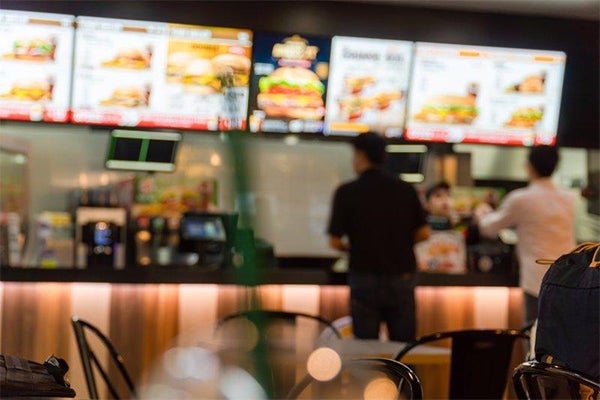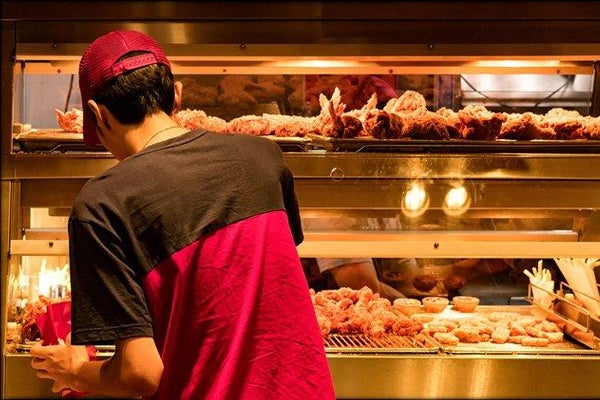Managing a restaurant franchise in 2022 is like a high-wire juggling act. There are so many pieces to keep an eye on, and one wrong step can send an entire service crashing. As eating out resurges, one of the smartest moves you can make is to alleviate staffing concerns.
Quick-service restaurants (QSRs) fell prone to any number of difficulties over the past several years, on account of the havoc brought on by the Covid-19 pandemic. Perhaps the most challenging of these problems has been that, since services could resume at normal levels, QSRs have not been able to find employees!
As consumers quickly resume their eating-out habits, QSRs can’t seem to find the bodies to manage the volume. Many hospitality jobs now pay more than before, but just throwing money at the problem doesn’t always prove an adequate solution.

Even when you can see problems ahead of time, you still need the right strategies to overcome a quick-moving hurdle like adequate staffing. Nearly half of all restaurant owners expect recruiting and retaining employees to be their greatest problem this year. With conditions unlikely to let up soon and more people flooding back to old restaurant habits, efficient staffing is essential to maintain franchise-wide quality service.
Audit and Standardize Processes Across Multiple Locations
If you operate multiple locations, you’re probably well aware of the fact that each is its own animal. Every restaurant develops its own particular flow of service and staffing to meet its needs. Keeping management strategies decentralized can be effective because it allows each QSR the flexibility to build its own optimal approach. At the same time, you do need some standardized procedures across locations in order to run a well-oiled business machine.
Standardization promotes responsibility and consistency across the company. For example, even if each QSR has its own staffing needs, you can at least set in place one central scheduling software and request-off policy. This helps everyone involved. Managers across locations can assess their needs. Staff who may float between locations can work off one organized calendar, and not mix up days and locations. And guests benefit from an adequately-staffed experience—and better service overall!
Establishing consistent franchise-wide processes also makes it easier to track data and implement company-wide changes. Assessing which locations are more profitable or which over- or underuse product becomes much easier with standardized inventory methods.
Common Audit Practices

If you’re going to standardize your auditing practices, the first question is what to include in these audits. Create a checklist that you can apply fairly at all your locations—and keep the standardization to universal policies. For example, no matter what you serve at each location, you should enforce the same health and safety policies across them all!
Similarly, standardization comes in handy in enforcing company policies and legal obligations across businesses. Along with standard safety requirements, take time to spell out and standardize any above-and-beyond procedures at your venues.
Lastly, make sure to follow up regularly. Even if the date is far away or not precise, making sure that everyone knows audits will happen is important in enforcing processes across the company.
Onboard Fast, but Onboard Right
It’s a given that if you train your staff correctly from day one, you can more confidently assume they know what they’re doing down the line. Onboarding is critical in any industry, but especially in an environment as fast-paced as hospitality. There simply isn’t time to re-train someone over and over during busy service hours.
Lackluster onboarding also demoralizes employees and can lead to costly mistakes and a revolving door of staff. The threat of losing precious hires should not be taken lightly as 70% of quick-service industry leaders believe labor shortages will continue through 2022.
Luckily, studies find that 69% of people are more likely to stay with a company for the long haul if they have a great onboarding program. When individuals feel taken care of by their employer, they tend to repay that care in the form of loyalty and hard work.

The best way to empower your team to succeed during service is by giving them all the tools they need during onboarding. Everyone will make some mistakes during their first few days. With any luck, a robust training regimen can help you at least dodge costly errors!
A robust training is more than just a trial shift, a handbook, and throwing someone into the fire. Restaurants are notorious for chaotic or underwhelming training policies. For example, while 68% of restaurants share an employee handbook within the first thirty days of employment, only 36% of employers check in on new hires.
Without frequent check-ins and in-depth explanations of service, how will you know if everyone throughout your QSR adheres to the same standards—or even knows the standards? Dedicating time to building a clear, consistent training policy can mitigate these issues.
Revisit How You Evaluate and Manage
Considering the chaos of daily service, it can be easy to lose sight of the bigger picture. Good management is more than just putting out fires during a dinner rush. It’s also assessing restaurant revenues, cost margins, inventory, staffing (and making sure staff is knowledgeable and happy), scheduling, event planning—the list goes on.
Restaurant staffing is more than just having enough bodies on the floor during the right shift. It’s also evaluating whether those team members can perform well and whether they feel confident and appreciated in their service. Nearly 50% of workers report leaving a job due to low levels of recognition.

This recognition can come in many forms. Be sure to share positive customer feedback whenever possible! Sometimes an employee of the month award can help bring out the competitive spirit. At other times, positive feedback in a performance review is enough to make an employee feel like part of the team.
A Positive Working Environment
The best restaurant staffing trick you can implement throughout your QSR is making sure all employees enjoy their work. And the only way to get an honest understanding of staff sentiment is with regular meetings.
While many managers let performance reviews fall through the cracks, they are vital to keeping your finger on the pulse of the restaurant—and the entire franchise. Keep in mind not to get stuck on one form of review. When trying to shake up how you track employee performance, it helps to track a number of different metrics.
Allowing employees to evaluate themselves encourages accountability. Someone who is willing to say they need to work harder or show up on time is more likely to follow through on the intention. Coworker and guest feedback is another great way to get real-time updates on staff, especially newer hires.
Finally, no review is complete until you have a plan for the future. Encourage employees to create a plan regarding how they’re going to advance their careers. An establishment that looks after its workers is not just setting them up for success, but setting the QSR up for success as well.
Leverage Technology to Optimize Your Restaurant Staffing Scheduling Strategies

Managers learn early on that no two staff members are exactly the same, and seldom does everyone have open availability. While sticking names on a schedule at random is certainly the easiest scheduling method, it’s not at all the smartest. Managers need to address their restaurant staffing needs strategically by playing to team members’ strengths and availability.
After all, staff scheduling isn’t just about covering shifts. It’s also about building cohesive teams from scratch. Factors like experience levels, peak business hours, and work-life balance all must go into the evaluation of each employee for a particular shift. Failing to consider these components can result in inadequate service, overloaded workers, and eventually a high turnover rate.
This is where tech can help! Gone are the days when managers had to rely on printing out or emailing confusing, color-coded spreadsheets to distribute schedules. There are any number of dynamic platforms QSR franchises can utilize for efficient scheduling and communication.
But what should you look for in an online restaurant staffing platform? When assessing different platforms, here are a few functionalities to consider:
- Instant messaging capabilities for management and staff
- Automated notifications about shifts
- The ability to duplicate shifts across weeks, or set recurring shifts
- In-app trading or swapping of shifts
- A dedicated request-off avenue
- The ability for staff to upload their availability
Employee scheduling software is beneficial for your whole staff, but it also requires a bit of cost investment. Many platforms work on a subscription model, meaning you will have to factor the cost into your monthly overhead. A financial partner who understands the particular needs and budget margins of your restaurant franchise can help you align your finances with the best platform for your business.
Continue Your Recruitment Efforts
Every QSR knows that even if you are fully staffed, it’s best to keep an eye out recruitment-wise, because some turnover is inevitable. Pre-pandemic, the turnover rate among restaurant workers was already estimated at 73%—and the reshuffling that has occurred over the past few years has only driven that higher.
Even as you try to mitigate the amount of turnover, you need to be prepared for it when it occurs. Build a recruitment strategy that doesn’t just attract the top talent, but also convinces talent to stay.

The first step is to assess the actual staffing needs of each location—and to do so prudently. Many establishments try to run with a bare-bones staff, whereas others overstaff and then struggle when labor costs run wild. Figure out exactly how many workers you need and precisely what tasks you need them for.
A crisp job description that fully entails the tasks of the job is equally as important. People need to know what they are applying for, as role misalignment is another trigger for turnover. While everyone by nature winds up somewhat cross-trained in a QSR, you don’t want one employee de facto performing five jobs across a shift. (No employee wants to be in that position, either.) Clearly communicate compensation rates and the required availability from the get-go as well.
Whether it’s with a stage shift or a more formal probationary period, make sure to set aside time to assess your potential hires’ work in the space. Many prospects may say the right things in the interview, but not be a fit for your establishment. This allows you to observe how well the employee fits into the new company and position. If there are problems, this is the time to take immediate corrective action.
Commit to Smart Staffing in 2022!
Managing a restaurant franchise is like a high-wire juggling act. There are so many pieces to keep an eye on, and one wrong step can send an entire service crashing. As eating out resurges in 2022, the most critical thing you can do is mitigate staffing concerns!
Whether it’s through more regular auditing, better hiring and training policies, employee assessment and empowerment, or integrating better scheduling technology—or ideally, all of the above—commit to making 2022 the year you optimize your staffing procedures. Just because the industry is in flux with turnover, it doesn’t mean your location has to suffer.
Of course, implementing many of these new policies and systems can require substantial investment, of both time and money. A financial partner who understands the unique financial needs of a QSR franchise, like Premier Valley Bank, a division of HTLF Bank, can help set you up for success this year. Connect with a commercial banker who can help you plan for smart QSR staffing investments today!









